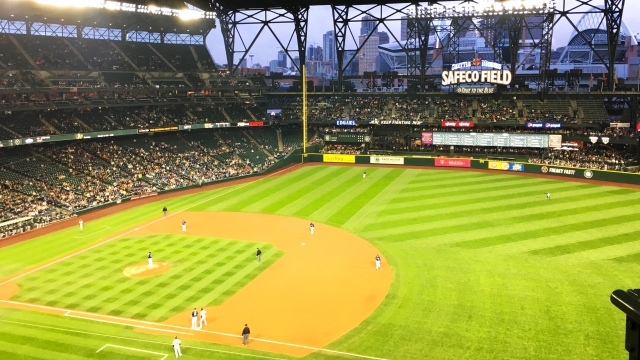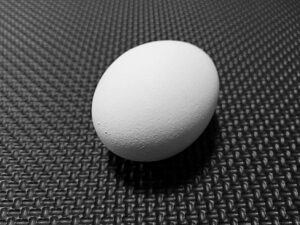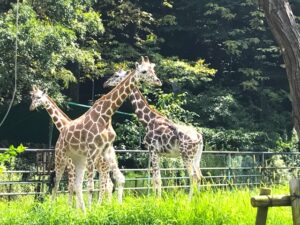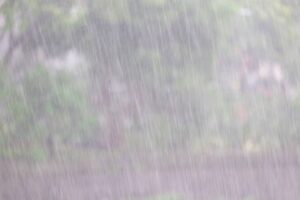今回は、
There is / are 〜. の応用編です。
「基本編」では、
There is / are 〜. の形を解説しましたが、
応用編では、[ is / are ] の部分が、さまざまに変わることにより
さらに表現豊かにすることができることを、解説します。
There [ is / are] 〜. の is / are の部分
There is / are 〜. の一番の大切な機能は、
です。
👉 is / are が「動詞」の部分で、
この部分をさまざまな「時表現」に変えることにより、表現力が豊かになります。
まずは、
基本的な「時表現」のパターンを見てみましょう。
①「過去の話」を話題に引き込む場合
▶︎ There was/ were 〜.
ex.1 There was a little dog in the box.
「箱の中に小さな犬が1匹いました。」
ex.2 There were a lot of people in this ballpark yesterday.
「昨日この野球場にたくさんの人がいました。」

※ was, were の区別は
実質的な主語の a little dog[単数], a lot of people[複数]で決まります。
②「未来の話」を話題に引き込む場合
・be going to を用いて There is/are going to be 〜.
ex.3 There will be much snow tomorrow.
「明日は大雪になるだろう。」
ex There is going to be a party tomorrow.
「明日パーティがある予定です。」
※ニュアンス的には
be going to には「その方向への準備等が進められていて、<その予定だ>」
という感触があります。
③「現在完了の話」を話題に引き込む場合
▶︎ There has / have been 〜.
ex. 5 There has just been another accident.
「また事故がちょうどありました。」
④ used to で「過去にあった状態」を話題に引き込む場合
▶︎ There used to be 〜.
ex.6 There used to be an old house here.
「以前ここには古い家がありました。」
※ used to は「過去の状態」を表す表現なので、
「現在」は、そこに「古い家がない」ことを意味します。
⑤「〜のようだ」と話題に引き込む場合
・There seem(s) to be 〜.
・There appear(s) to be 〜.
ex.7 There seems to be a misunderstanding between us.
「私たちの間には誤解があるようです。」
※ seem to be となるのは、「実質的な主語」が複数の場合
ex. 8 There appear to be many injured people there.
「そこにはたくさんの負傷者がいるようです。」
※ appears to be となるのは、「実質的な主語」が単数の場合
There +上記以外の一般動詞〜. の形もあります
There is/are 〜. と似た文で、上記以外の一般動詞がくる場合もあります。
ex.9 Once upon a time there lived an old man and an old woman in a village.
「昔々ある村におじいさんとおばあさんが住んでいました。」
※ once upon a time は「昔々」という意味で、
「昔話」などの出だしでよく使われる表現です。
👉普通に表現すると、
Once upon a time an old man and an old woman lived in a village. となります。
🔴「新情報を話題に引き込む」There is / are の形を用いて
be動詞の代わりに、一般動詞の過去形を用いて There lived+「主語」〜. の形にして、「新情報を話題に引き込んだ」んです。
ex.10 There comes a time when we heed a certain call.
「私たちがある叫び声に気をつける時がやってくる。」
※ “We Are The World” by USA for Africa の出だしの歌詞
– exist , stand, remain, arise などがあります。
応用編はここまで。









コメント